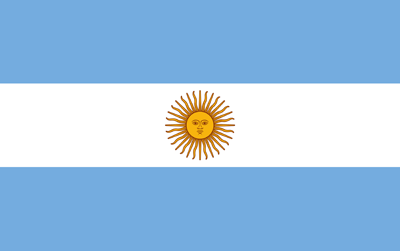PAKISTAN COTTON MARKET
Last week in the local cotton market, the strong trend was witnessed due to the panic buying by the textile and spinning mills. The reason behind the extraordinary increase in the prices is cotton and US dollar value which are increasing continuously. Another reason behind the increase in the rate of cotton is the delay in the arrival of imported cotton, as well as, a significant decrease in the production of local cotton.
In the local cotton market during the last week, the cotton prices increased rs 300 to 400 rs per maund due to an increase in demand and less availability of cotton. KCA Spot Rate Committee of the Karachi Cotton Association increased the spot rate by Rs 200 per maund and closed on Rs 14000 per maund. This uncertain situation of the market almost sets the level of cotton in between Rs 13500 to Rs 14400 per maund which is the highest in eleven years. On the other hand, during the last season, the rate of cotton was between Rs 8000 to Rs 8500 per maund while the rate of Phutti was Rs4500 per 40 kg.
Moreover, the last week of August has started and it is the time when the crop is in the final stage and the month of September is considered to be the most important month for the cotton crop. We can say that now this is a test case for us because the cotton crop has entered the most critical stage. At this point, our slightest negligence can turn all our efforts upside down. In the months of August and September, we can get about 80% of our production.
Export orders for foreign countries are being received in a large number but due to the difficulty in determining the price of international and local cotton and the value of the dollar, many exporters are uncertain.
After fluctuation in the rate of cotton in the international market, a bullish trend prevails in the market. There is a slight decrease witnessed in exports as compared to last week according to the USDA weekly export report. An increasing trend in the prices of cotton was witnessed in Brazil, the Central Asian States, Australia, and China but in India, the rate of cotton decreased by Rs 300 per candy (356 kg) due to partial arrival of new Phutti crop.
The price of cotton in Sindh is between Rs 13,500 to Rs 14,200 per maund. The price of Phutti in Sindh is between Rs 5800 to Rs 6300 per 40 kg. The price of cotton in Punjab is between Rs 13,600 to Rs 14,400 per maund. The price of Phutti in Punjab is between Rs 5600 to 6300 per 40 kgs. The price of Phutti was in the range of USC 0.99~1.06 Lbs. (13,500~14,400/ maund).
| Opening Of The Week | Closing Off the Week | Change | |
| Lowest | 98.00 | 99.00 | 1.00 |
| Highest | 105.00 | 105.00 | 0.00 |
CRUDE OIL
Crude Oil prices opened at USD 65.64 with higher level as compared to last week closing figures.
In this week, crude oil price showed upward trend, while dropped in 2nd last session, hence closed on positive side by the end of week.
In last day of the week, Crude Oil price closed at USD 68.74 with increase of USD 3.10 cents as of opening figure of week.
| Opening of Week | Closing Of Week | Change | |
| Price | 65.64 | 68.74 | 3.10 |
EXCHANGE RATE
In last week values of Pak rupee depreciated against US Dollar’s, other major currencies showed mixed trend in both Interbank and open markets.
At the end of week, Euro closed on a positive note with figure of 1.18 and British Pound also closed on positive note with figure of 1.38 against USD.
| Selling | Buying | |
| LC Sight | 165.68 | 165.63 |
| LC 120 Days | 164.62 | 164.57 |
| Open Market | 167.96 | 164.14 |
NEW YORK COTTON FUTURE
New York Cotton futures opened with slightly higher levels on Monday as compared to previous week’s closing figures.
NYCF showed upward trend in this week while drop on 2nd last session, hence mounting trend was observed in this week and closed on positive side by the end of week.
At last day of the week, DEC 2021 closed at 94.84 with increase of 148 points.
At last day of the week, MAR 2022 closed at 93.83 with upward of 114 points.
At last day of the week, MAY 2022 closed at 93.18 with rose of 103 points.
LIVER POOL INDICES
Liverpool Index A was opened at 101.50 with lower level of previous week closing figure.
In this week Index “A” showed upward trend in this week and closed on positive side by the end of week.
At last day of the week, LPI “A” closed at 103.90 with the increase of 240 points.
| Opening of the Week | Closing of the Week | Change | |
| Index A | 101.50 | 103.90 | 2.40 |
| Index B | 0.00 | 0.00 | 0.00 |
PAKISTAN YARN MARKET
Local yarn market remained firm during the last week ended. Yarn prices remained stable with average business activity. Most of the mills are sold for 45~60days approx. and are firm at their prices. On the other hand, buyers were forced to buy at these rates from domestic market as import of yarn is not viable.
PSF prices remained stable during the last week ended in domestic market. Crude oil, PTA, MEG prices were stable in international market in the last few weeks. For the next week, prices are expected to remain firm and stable.
Faisalabad trading market was dull and limited activity was seen. Cash crunch was the main reason for slow trading activity. Fine counts were in some demand but PV/Viscose sale reported slow demand.
Following are current asking prices of yarn in local market based on ex-mill terms:
| Count | Price in Pak Rupees / 10 LBS | Price US$/Bale |
| 16/1 CD | 2547 – 2692 | 615 – 650 |
| 20/1 CD | 2651 – 2796 | 640 – 675 |
| 30/1 CD | 3003 – 3210 | 725 – 775 |
| 20/1 CM | 3065 – 3210 | 740 – 775 |
| 30/1 PC 52:48 | 2299 – 2485 | 555 – 600 |
| 40/1 CM | 3769 – 3893 | 910 – 940 |
| 60/1 CM | 5198 – 5343 | 1255 – 1290 |
| 80/1 CM | 6710 – 6938 | 1620 – 1675 |
EXPORT YARN MARKET
Export yarn market remained dull with limited business activity. Customers remained on side line as no such enquiries were received.
Suppliers are still firm and not showing any flexibility in prices. Major reason for the stable stance is bullish cotton prices in domestic and international markets. At the same time, there has been handsome buying of yarn from domestic customers which are keeping suppliers’ firm.
If we analyze the sales position of suppliers, they are covered till end October and not showing any panic sales.
Moreover, cotton prices are bullish and they are expecting further increase in days to come. So, suppliers are not selling any forward delivery sales and staying firm.
Chinese customers remained on side line and didn’t show any interest in buying. Major reason is decline in Chinese cotton prices and slow demand from end customers which is keeping yarn business sluggish.
European customers remained on holidays and there was no such activity in the market. However, customers will be back from their summer holidays next week and will discuss their requirements.
| Count | USD / Bale |
| 16/1 CD | 645 – 655 |
| 20/1 CD | 670 – 680 |
| 20/1 CM | 755 – 765 |
| 16/1 CM | 735 – 745 |
| 20/2 CD | 740 – 750 |
| 24/2 CD | 765 – 775 |
| 10/1 CD SIRO YARN FOR WEAVING | 565 – 580 |
PAKISTAN FABRIC MARKET
In current week under review, the local fabric market slowed down and limited activity was reported for both narrow and wider width fabrics whereas prices showed firm posture throughout the week.
Weavers received inquiries with in limited numbers as local finisher sensed hint of correction but towards the end of the week the prices showed firm trend. Weavers booked limited orders after tough negotiations at last week price level as spinners kept their yarn prices firm.
Narrow width looms are booked till early November~ mid-November’21 whereas wider width looms are booked till end November/early December’21 and onward deliveries are available with major weavers.
Local fabric prices of regular items are as follows:
| Construction | Price US$/YD Ex Mill |
| 20CDX16CD/128X60 – 63″ 3/1 ”S” TWILL PAK CTN | 1.57 – 1.59 |
| 16X12/108X56 63″ 3/1 | 1.71 – 1.73 |
| 20CDX20CD/108X58 63″ 3/1 ”S” TWILL PAK CTN | 1.29 – 1.31 |
EXPORT FABRIC MARKET
Woven fabric business is slow in some of the Far Eastern countries. Korean customers are engaged in knitted fabric business due to slow demand of woven fabric now a days. Chinese customers are buying only urgent orders due to high fabric prices of this season however Bangladesh customers have booked bulk orders with their selected supplies both in rigid and stretch items in narrow width fabric. Other markets remained aside of buying during the week.
Suppliers are chasing orders for export markets hence they are interested to discuss any reasonable target prices.
Currently good suppliers are booked till end of Oct and offering Nov onward deliveries
European customers were discussing new orders even during their holidays due to too much increase of prices and fear that prices may further increase in coming days however limited business was recorded by Germany, Italy and African customers. Wider width business remained mixed due to partial holidays in European markets. Suppliers are offering Nov / Dec onward deliveries. Prices remained stable during the week due to stable yarn prices.
Following were the closing rates based on CNF Far Eastern markets:
| Construction | Price US$/YD CNF Far East |
| 20CDX16CD/128X60 – 63″ 3/1 ”S” TWILL PAK CTN | 1.58 – 1.60 |
| 16X12/108X56 63″ 3/1 | 1.74 – 1.76 |
| 20CDX20CD/108X58 63″ 3/1 ”S” TWILL PAK CTN | 1.30 – 1.32 |
BED LINEN & TOWELS
In Home Textiles, market situation is same as per last week. Inquiries flow is slow due to lockdown in Australia and holidays in Europe. It is expected that inquiry flow will increase from second week of September.
Big retailers have already booked their orders for next 2 seasons and now they will start procurement for summer season. All big manufacturers are mostly booked for next 2-3 months with 70-80% of their capacities.
Towel sector is working on their maximum capacity and lead times are 120-150 days.
Moreover, most manufacturers are hesitant to quote on CNF basis due to freight charges constantly increasing. The CNF is basis prices are subject to confirmation. Any increase in charges at the time of dispatch is being transferred to the customer.
GARMENTS
Order influx in Pakistan garment factories kept the production space filled up. Furthermore, employment ratio also increased as factories are in need of work force to execute the orders in hand and they also foresee more orders coming in future. Besides demand is increasing overall, one of the reasons is also the declining trend of China’s garment export as many observers are of the opinion that reliance on Chinese garment production is shrinking. At the moment overall factories in Pakistan have covered their productions till Nov/Dec on average and offering onward deliveries. Price points have observed a stiff sentiment as raw materials’ prices are not showing any soft trend.
GOING FORWARD
About future market it is expected that price for local yarn will remain dependent on local cotton and international trend of NYCF, raw material factor will determine the yarn price accordingly. Further prices trend will be according to demand and supply of different yarn counts which will lead price level.
For local cotton, the reason behind extraordinary increase in price is the prices of cotton and US dollar value which is continuously increasing. Another reason behind the increase in the rate of cotton is delay in arrival of imported cotton, as well as, significant decrease in the production of local cotton. It seems that prices will remain firm in coming days with minor fluctuations.
Market remained under silent mode in terms of buying for export yarn market. Customers floated limited enquiries against which no business was concluded. However, cotton prices are bullish and we might see buying from customers from different regions in first of half of September
Going forward we expect that local fabric market will remain firm for coming weeks.
Export fabric business remained mixed during the week however it is expected that it will improve during next couple of weeks as European customers will be back in first week of Sep.
The manufacturers are expecting good flow of inquiries for winter season in home textile sector. In reasonable foresight, a handsome flow of orders is expected after the customers are back from current holiday season. However, the customer will have to digest the up charge if freight and raw material price trends do not achieve a stability.
Garment factories in Pakistan are fully booked with a lead time of ninety to hundred and twenty days as they have reasonable number of orders in hand. Garment exporters also foresee more orders coming in response to developments done for SS22 and FW22 seasons.







